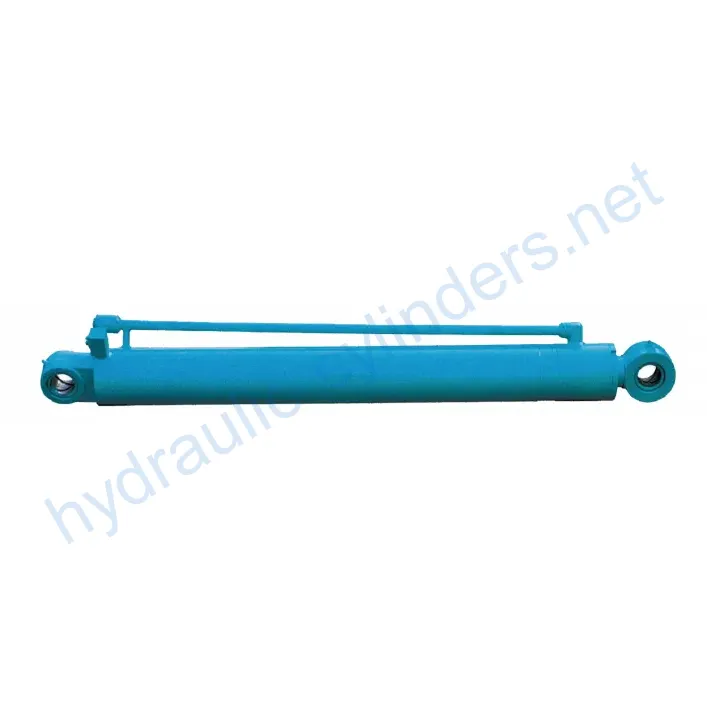Arm Cylinder For Komatsu Small Excavator PC120-3-5-6-6E-7
Product Definition
The Arm Cylinder is a specially designed hydraulic cylinder that provides linear motion and power to the arm of various machinery, such as excavators, cranes, and robotic arms. It plays a crucial role in hydraulic systems, allowing for efficient movement and control of additional tools or attachments. These cylinders not only enable smooth motion but also withstand heavy loads, ensuring high operational efficiency and reliability in various working conditions.
Product Features
- High-Efficiency Transmission: The Arm Cylinder provides powerful linear motion and force, ensuring high-performance efficiency in various operations.
- Precise Control: Through the hydraulic system, the Arm Cylinder enables precise motion control, making the operation of attached tools more flexible and accurate.
- Durability: Arm Cylinders are typically made of high-strength materials, offering excellent wear resistance and corrosion resistance, making them suitable for long-term use in harsh environments.
- Multi-functional Adaptability: These cylinders can be widely used in various machinery such as excavators, cranes, and robotic arms, adapting to different job requirements.
- Easy Maintenance: Designed with ease of maintenance and replacement in mind, the Arm Cylinder allows for convenient periodic inspections and maintenance, reducing equipment downtime.
Application Scenarios
- Construction Engineering: In excavators and cranes, the Arm Cylinder is used to control the movement of buckets or booms for earthwork, material handling, and structural installation.
- Manufacturing Industry: In automated production lines, the Arm Cylinder is used for the motion of robotic arms, enabling processes such as assembly, welding, and material handling, improving production efficiency and accuracy.
- Agricultural Machinery: In agricultural machinery such as harvesters and seeders, the Arm Cylinder controls the movement of operating arms, performing tasks such as seeding, fertilizing, and harvesting.
- Mining Industry: In mining equipment, the Arm Cylinder is used to control the arm movement of mining equipment, facilitating ore extraction and transportation.
- Logistics and Transportation: In forklifts and handling robots, the Arm Cylinder controls the lifting and movement of forks, enabling material handling and stacking.
Design Considerations and Selection Criteria
- Bearing Capacity: The Arm Cylinder is designed to withstand specific loads and must be chosen accordingly to ensure safe and efficient operation.
- Sealing: Various sealing elements, such as piston seals and rod seals, are used to maintain proper hydraulic fluid containment and prevent leakage.
- Durability: The Arm Cylinder’s construction materials and surface treatments enhance wear resistance, extending its lifespan in demanding environments.
- Safety: Safety features, such as pressure relief valves and load-holding valves, are incorporated to prevent accidents and provide secure operation.
- Maintainability: Easy access to maintenance points, clear instructions, and standardized parts contribute to simplified maintenance and reduced downtime.
Sealing and Lubrication
The Arm Cylinder employs various sealing components, such as piston seals and rod seals, made of wear-resistant materials like polyurethane and nitrile rubber. The cylinder’s body and threaded end surfaces undergo precise processing to enhance wear resistance. Regular lubrication with the appropriate amount of hydraulic oil is necessary to ensure smooth operation.
Regular Inspection and Preventive Maintenance
- Perform regular inspections to check for any signs of wear, leakage, or damage to the Arm Cylinder.
- Monitor the hydraulic fluid level and quality to ensure optimal performance and prevent contamination.
- Tighten any loose connections and fittings to prevent leaks and ensure proper functioning.
- Follow the manufacturer’s guidelines for maintenance intervals and procedures, including seal replacement and lubrication.
- Keep a record of maintenance activities and observations for future reference and analysis.
Product Installation Guide
1. Before installation, ensure that the hydraulic system is depressurized and the equipment is securely supported.
2. Carefully position the Arm Cylinder in the desired location, ensuring proper alignment with other components.
3. Connect the hydraulic hoses to the appropriate ports, following the manufacturer’s instructions for tightening torque.
4. Bleed the air from the hydraulic system and check for any leaks.
5. Operate the equipment through a test cycle to verify the proper functioning of the Arm Cylinder.
Safety Considerations and Environmental Factors
When working with the Arm Cylinder, adhering to safety measures is imperative to prevent accidents and ensure the well-being of personnel. Proper training, the use of personal protective equipment, and following safety guidelines are essential. Additionally, considering environmental factors such as proper disposal of hydraulic fluids and adherence to relevant regulations is crucial to minimize environmental impact.
Fault Diagnosis and Common Issues
1. Leakage: Inspect the cylinder for damaged seals or fittings and replace them if necessary. Ensure proper tightening of connections.
2. Slow or Inconsistent Movement: Check the hydraulic fluid level, pressure settings, and the condition of control valves. Perform maintenance as needed.
3. Excessive Noise or Vibrations: Inspect the cylinder for damaged components or misalignment. Lubricate moving parts and verify proper installation.
To effectively diagnose and resolve problems, follow these troubleshooting tips and solutions, and implement preventive measures to minimize potential issues.
Remember to organize the article logically, use subheadings for easy navigation, incorporate relevant images or charts to enhance understanding, and ensure clear and concise content suitable for readers with varying technical knowledge levels.
About Us
We are a professional manufacturer of replacement hydraulic cylinders, offering a wide range of products. We have become one of the leading manufacturers and wholesale distributors in the domestic and international markets. Adhering to the principle of excellence, we continuously improve our technological capabilities and production efficiency through fine manufacturing workshops and industrialized production management strategies. By introducing advanced digital manufacturing equipment and professional testing systems, we optimize our manufacturing platform and enhance product quality control processes, demonstrating strong innovation capabilities. Our goal is to meet diversified customer demands with principles of efficiency, precision, and high quality.
Note: This article is written by lyl.

